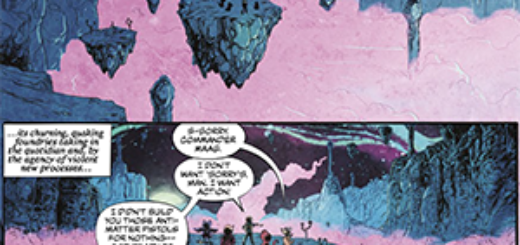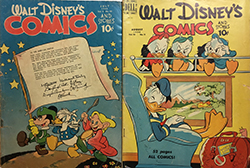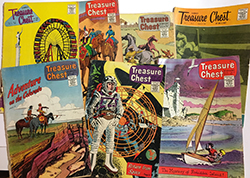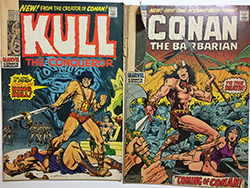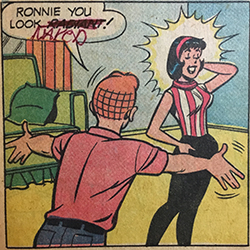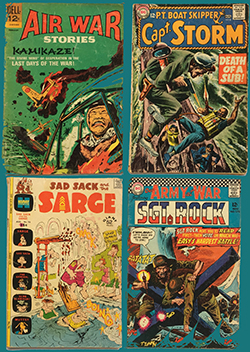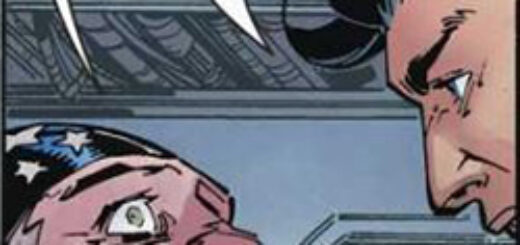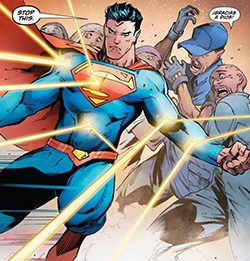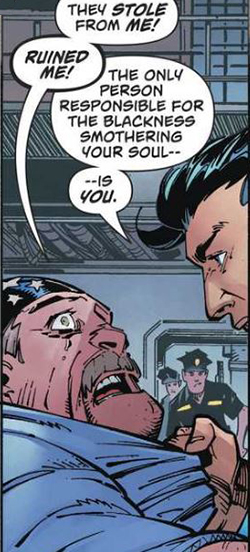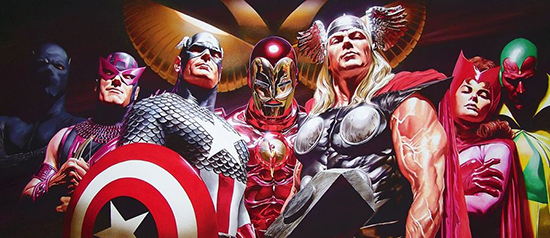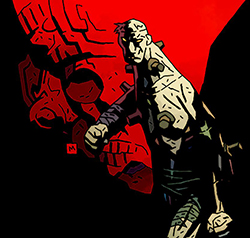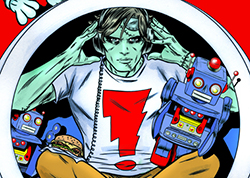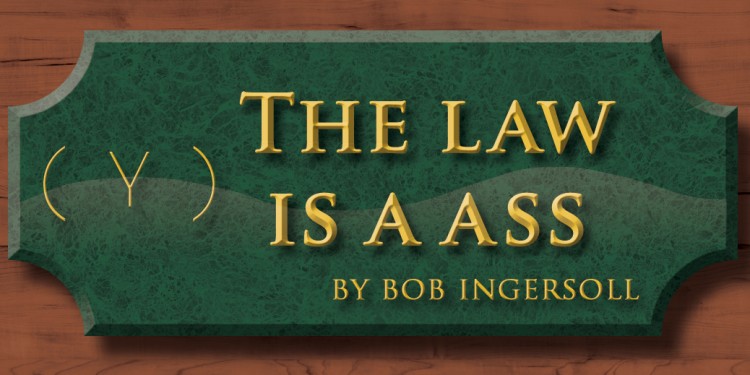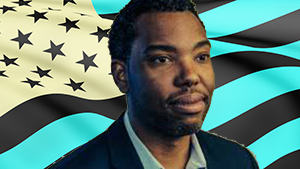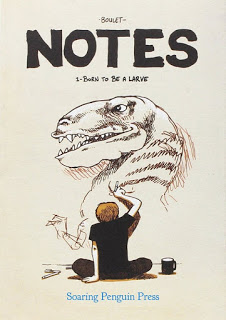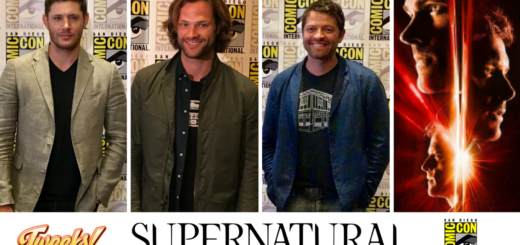Joe Corallo: Maxwell’s Demons
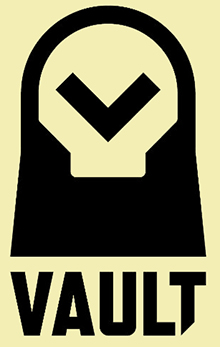 Vault Comics is one of the biggest stories on the indie comics scene this year. With publisher Damian Wassel and editor-in-chief Adrian Wassel at the helm, Vault has created a line of science fiction and fantasy comics with seasoned veterans like Tim Daniel doing design and art direction as well as books like Fissure and rising stars including David Booher on Powerless and Alien Bounty Hunter (with producer Mark Wahlberg) and Natasha Alterici on Heathen.
Vault Comics is one of the biggest stories on the indie comics scene this year. With publisher Damian Wassel and editor-in-chief Adrian Wassel at the helm, Vault has created a line of science fiction and fantasy comics with seasoned veterans like Tim Daniel doing design and art direction as well as books like Fissure and rising stars including David Booher on Powerless and Alien Bounty Hunter (with producer Mark Wahlberg) and Natasha Alterici on Heathen.
This past week I was able to chat with Deniz Camp and Vittorio Astone about their new comic at Vault, Maxwell’s Demons.
JOE: What’s the elevator pitch for Maxwell’s Demons? What’s the hook?
DENIZ: Maxwell’s Demons is the story of Maxwell Maas, the greatest mind of his generation. Told in a series of standalone stories, each focused on Max at a different point in his life and arranged non-chronologically, it is the story of transformational greatness, as a boy of cosmic importance struggles against the horrors and wonders of a science fiction universe. He’ll journey to other universes, face alien assassins, fall in love, and confront his own demons in as mind-bending a fashion as possible. At the heart of it all is Max himself, his own abilities and inadequacies, and the changes he goes through, externally and internally.
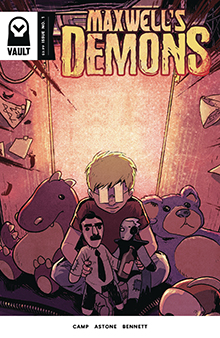
VITTORIO: Nothing to add here, Deniz summed up the story perfectly.
JOE: How did this book come together? Were you both already collaborating, did you find each other?
DENIZ: I wrote what would eventually become the first issue of Maxwell’s Demons on my own. It was shorter, about 12 pages. I found Vittorio while browsing DeviantArt and was immediately struck by his work, his ability to capture scale and shadow and light. All of these, I knew, would be crucial to Maxwell’s Demons, so I browbeat him into working with me! When he said he was game, I expanded the page count and added content, and when he said he was game for more, I built a bigger, more intricate pitch for the series and the world, knowing that he could handle anything I asked of him. So far, he’s destroyed every expectation and hope I had! Vittorio will have his own take, I’m sure!
VITTORIO: Before Deniz contacted me, I had a completely different idea regarding my career. As many Italian artists, my goal was to find a job in the French comic book market, so, at the beginning, Maxwell’s Demons should’ve been just a brief diversion for me. But the potential of this series and Deniz’s talent convinced me to see where this story goes – and being a part of i
DENIZ: Vittorio says “talent”, but what he’s not saying is he means my talent for kidnapping his loved ones and holding them hostage. All’s well that ends well, though!
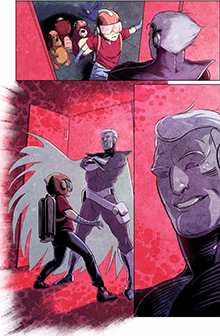 JOE: Well whatever you did, it’s working! So what made Vault Comics the perfect home for Maxwell’s Demons?
JOE: Well whatever you did, it’s working! So what made Vault Comics the perfect home for Maxwell’s Demons?
DENIZ: Vault has been amazing! At its core, Vault is a family and feels as such. I talked to Adrian and Damian (EiC and Publisher of Vault, respectively) just after their coming out announcement. By then we had already been producing Maxwell’s ourselves, and had many completed pages to show. They’ve been amazingly supportive of the book, and of us as creatives. They understood what we were going for right from the start, and gave us the freedom to pursue our most avant garde and strange formal ambitions, while helping us keep the story and the characters clear. It’s a better book for their involvement; richer, clearer, and more intentional. I’m incredibly grateful, and I think spoiled for all other publishers!
VITTORIO: Vault is fantastic! Adrian and Damian are always helping us in the creative process with their advice. And working alongside many talented artists is something that really pushes me to give my best. In general our working environment is always fresh and cheerful, except for when
Deniz writes too much complex stories and I have to menace him with a voodoo doll. True story.
DENIZ: This is a true story, but this ever-expanding rash and string of bad luck is a small price to pay for great comics!
JOE: I’m glad to see it’s working out! I also see a little bit of an Adam Strange influence in Maxwell’s Demons. What were some of your influences both in the story and the aesthetic?
DENIZ: Maxwell’s Demons was influenced by a lot of science fiction, and some of that pulpy scifi was in the DNA of the first issue, especially in the aesthetic: Flash Gordon (He’s a miracle!!), Buck Rogers, Adam Strange, John Carter, etc. But Maxwell’s Demons is a modern book, and we’re pulling from a diverse range of modern and retro influences to create something that feels new, and (hopefully) surprising. Rather than another world, in the first issue.
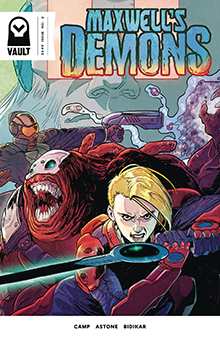 VITTORIO: Like Deniz said, pulp sci-fi was a big portion of our inspiration. Calvin and Hobbes was too. Max is, in fact, very much like Calvin, save from the fact that Calvin is often visiting other worlds just in his imagination. Also, we wanted his design to be somewhat naive, to better contrast with the dark tones of the story.
VITTORIO: Like Deniz said, pulp sci-fi was a big portion of our inspiration. Calvin and Hobbes was too. Max is, in fact, very much like Calvin, save from the fact that Calvin is often visiting other worlds just in his imagination. Also, we wanted his design to be somewhat naive, to better contrast with the dark tones of the story.
JOE: Maxwell himself is portrayed as a very lonely, yet determined kid. How did you both handle balancing this on the page for the readers to create a flawed and troubled yet sympathetic protagonist?
DENIZ: We’re all flawed, troubled-yet-sympathetic protagonists, right? (Well, everyone except Martin Shkreli, maybe. He F***** w/ the Wu Tang Clan).
Despite the absurd scifi trappings, Maxwell’s Demons is a very personal book for me, and I think it has the potential to be personal for a lot of readers. We’ve all felt isolated, by our intelligence or our inadequacies or interests or appearance. We’ve all had our best moments, and our worst. What I’m hoping to do with not just Max, but with all the characters in the book, is to show that dimensionality, to constantly upturn your understanding of the characters and your expectations as a reader. At the heart of Maxwell’s Demons is the thesis that not only do people change over time, but how the world sees them changes over time, too, as our understanding grows, or as the human being becomes subsumed by the legacy they leave behind.
VITTORIO: I think every one of us felt, at least once in his lifetime, alone because the way he saw the world. It’s very common when you’re a teenager, I think.
Max it’s defined not only by his intelligence and his adventures, but also by the regular, boring (often cruel) world around him, which is the reason why he built a portal to new universes in his closet.
DENIZ: Our metaphors are…unsubtle. :)
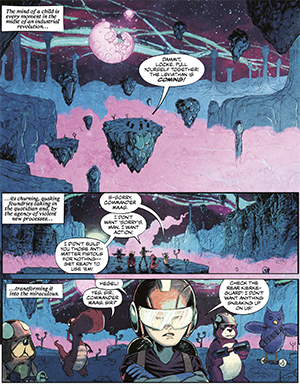 JOE: Maxwell has a very complicated relationship with his father. How did you both work on conveying this relationship in a way that would ring true to readers that may also have complicated relationships with family?
JOE: Maxwell has a very complicated relationship with his father. How did you both work on conveying this relationship in a way that would ring true to readers that may also have complicated relationships with family?
DENIZ: You can’t ever know how people will take these things, but speaking for myself: I wrote it from my own experience. When you’re a child, the world is a place of stark contrasts; people are heroes or they’re villains. The older you get, the more you come to understand that everyone’s just doing the best they can with what they’ve got. As a boy, even a very brilliant boy, I’m not sure Max can see it that way, but we can.
VITTORIO: In issue 1 Max’s father is very two-dimensional. But as the story goes and grows (and Max with it), we start to better explore and know this character, to see that he’s not just bad, but a complex, yet flawed, human. After we completed issue 1, Deniz wrote a beautiful epilogue to the story, to have a better view on him.
DENIZ: Most of issue 1 is told from Max’s perspective, and his father is very much one thing from Max’s perspective. But with the backup we’re able to get a story from Max’s father’s perspective, and that’s necessarily smaller, more intimate, with a less sharply defined morality.
JOE: Over the course of the first issue one thing I did notice was that there didn’t seem to be any female characters. While Maxwell’s Demons at its core is about a struggle between a father and son, will we be seeing any female characters introduced in future issues?
DENIZ: Yes! One particular female figure hangs over the whole series, but we’ll meet a very powerful female character in issue 2, and another (very different, but equally powerful) female character in issue 4. Vittorio has done an amazing job designing both, I might add.
VITTORIO: As Deniz said, later on the series we’ll see important female characters too. Which is good, because they are the one I usually have more fun designing!
JOE: Many comics today often feel that they are written for the trade paperback which isn’t necessarily a bad thing. We tend to get first issues with big cliffhangers that leave the reader unable to really tell you what the first issue was about. Here, while Maxwell’s Demons doesn’t answer all your questions, it does feel like a complete story which is very refreshing. What made you both decide to take this route with the series?
DENIZ: Thanks for saying so! I love comics as a medium, and I believe in writing to the medium and the format. Maxwell’s Demons is coming out in 24 page single issues, and each of those issues will be complete story. I want readers to come back because of the content, not because they got a 1/5th sliver of a story that’s unsatisfying on its own. The more you read, the more you’ll see that we’re actually telling one complex narrative, with connections and plot points that modify the issues that come before and foreshadow what comes after, but you can pick up any individual issue and get a complete story. In keeping with “writing to the medium”, future issues will feature a lot of experimentation in layout and the narrative tools that are unique to comics.
VITTORIO: I think this is one of Maxwell’s Demons’ strengths. Each issue is about a given moment in Max’s life, and they can be very far away in time from each other (you’ll see in issue 2!), so having a complete story simply was the best choice of narration.
JOE: Thank you both so much for taking the time to chat with me! Before we wrap up, is there anything else you’d like to add?
DENIZ: Just that we’ve poured our hearts and souls and brains into this book, and I genuinely believe it’s going to be one of the most ambitious and beautiful books you’ll read this year. I hope you’ll give us a chance! Thanks for the opportunity, Joe!
VITTORIO: ’Max’ is the biggest and greatest project I’ve worked on so far and I’m proud of it and my co-workers! Hope you’ll like it!
Maxwell’s Demons hits comic shops October 11th.

